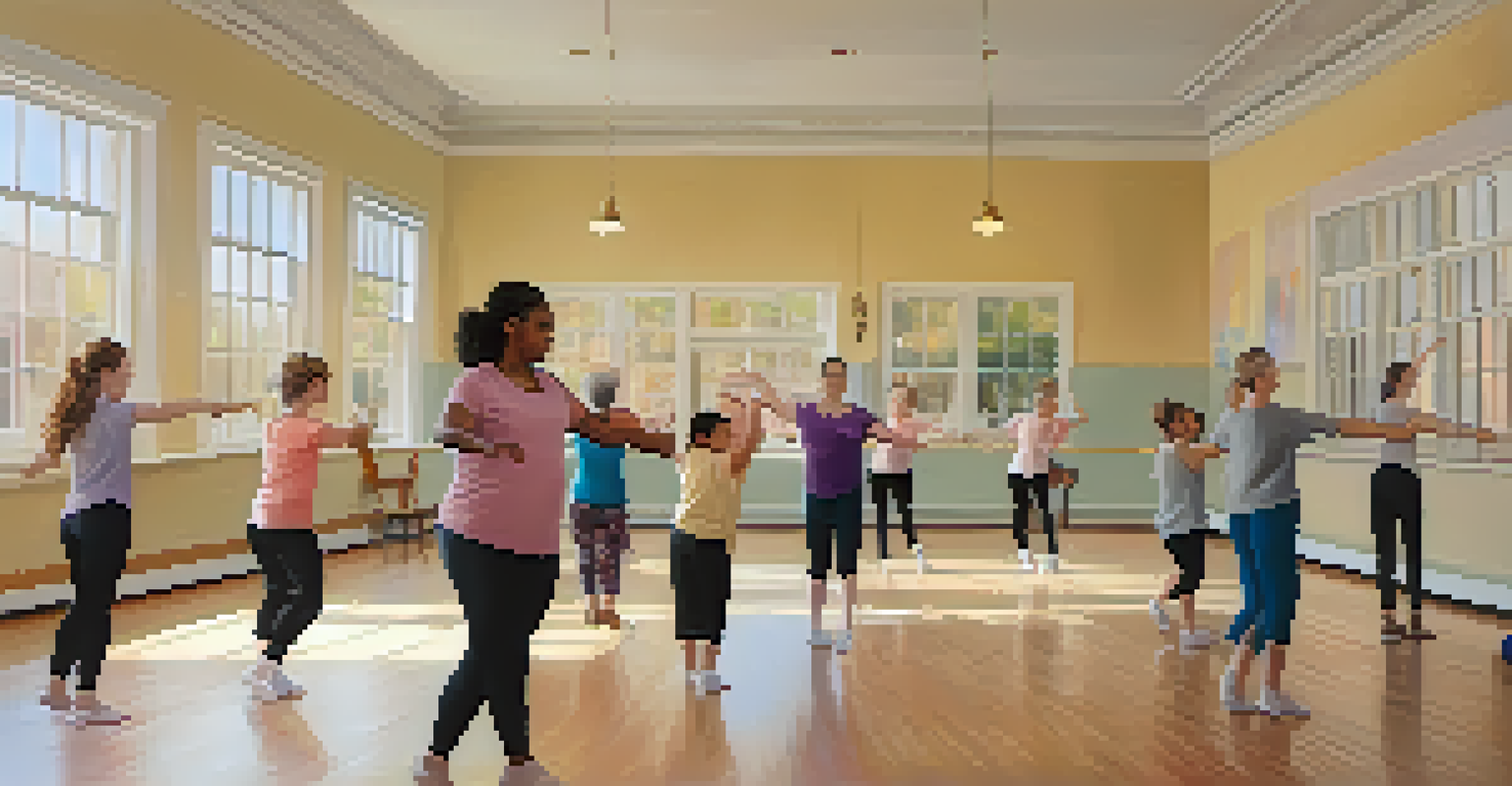Benefits of Dance in the Workplace for Employee Wellness

Boosting Physical Health Through Dance Activities
Engaging in dance promotes physical fitness, which is essential for overall health. Regular movement helps combat the sedentary lifestyle common in office environments, reducing risks of obesity and related diseases.
Dance is the hidden language of the soul.
Dance can improve cardiovascular health, flexibility, and strength. When employees participate in dance breaks, they can experience increased energy levels throughout the day, making them more productive and focused.
Moreover, incorporating dance into workplace wellness programs encourages a culture of health. It sends a clear message that the company values the well-being of its employees, which can lead to higher job satisfaction.
Enhancing Mental Well-Being with Dance
Dance is not only a physical activity; it also serves as a powerful stress-reliever. The rhythm and movement allow employees to express themselves, providing a healthy outlet for emotions that may build up during busy workdays.

Participating in dance can boost endorphin levels, often referred to as 'feel-good' hormones. This can lead to improved mood and reduced feelings of anxiety or depression, fostering a more positive workplace atmosphere.
Dance Boosts Physical Health
Engaging in dance promotes fitness, reduces health risks, and increases energy levels among employees.
Additionally, the act of dancing can help employees break away from rigid thinking patterns. This creative movement encourages fresh perspectives and innovative ideas, which are vital for problem-solving in the workplace.
Fostering Team Bonding Through Group Dance Sessions
Group dance activities provide an excellent opportunity for team building. When employees dance together, they learn to communicate and collaborate in a fun and relaxed setting, strengthening their relationships.
To watch us dance is to hear our hearts speak.
These shared experiences can create lasting memories, which help foster a sense of belonging. A strong team dynamic often translates into improved cooperation and efficiency in work-related tasks.
Moreover, participating in group dance can break down hierarchical barriers. Employees from different departments can connect on a personal level, promoting unity and a shared sense of purpose within the organization.
Promoting Creativity and Innovation via Dance
Dance encourages free expression and creativity, which can be beneficial for problem-solving in the workplace. As employees engage in dance, they tap into their creative sides, making it easier to think outside the box.
This creative stimulation can lead to innovative solutions and ideas that might not surface in traditional meetings. When employees feel free to express themselves, they may contribute unique insights that enhance projects.
Dance Enhances Mental Well-Being
Participating in dance can relieve stress, elevate mood, and foster a positive workplace atmosphere.
Furthermore, incorporating dance into the workday can lead to a more dynamic and adaptable work environment. Embracing creativity fosters a culture where new ideas are welcomed and explored.
Reducing Workplace Stress with Dance Breaks
Taking short dance breaks throughout the day can significantly reduce stress levels. These breaks allow employees to step away from their desks and clear their minds, contributing to better focus and productivity afterward.
Dance breaks also serve as a form of physical recharging, helping to combat fatigue that accumulates during long hours of work. By moving their bodies, employees can alleviate tension and reset their mental state.
Incorporating structured dance breaks into the workday can create a more balanced schedule. This balance is essential for maintaining long-term employee wellness and satisfaction.
Encouraging a Culture of Fun and Engagement
When a workplace embraces dance, it fosters a culture of fun and engagement. Employees are more likely to feel excited about coming to work when they know they can participate in enjoyable activities.
This culture of fun can improve employee retention rates, as satisfied employees are less likely to seek opportunities elsewhere. A vibrant workplace environment often leads to higher levels of motivation and commitment.
Dance Fosters Team Bonding
Group dance activities strengthen relationships and promote unity, enhancing cooperation among team members.
Moreover, a playful atmosphere encourages employees to be themselves, promoting authenticity and openness. When staff members feel comfortable, they can contribute more effectively to the team's goals.
Creating Inclusive Spaces with Dance Activities
Dance is a universal language that can bring people together, regardless of background or ability. By incorporating inclusive dance activities, companies can ensure that all employees feel welcomed and valued.
These activities can cater to varying skill levels, allowing everyone to participate without feeling intimidated. This inclusivity promotes diversity and strengthens workplace relationships.

Additionally, creating an environment where all employees can express themselves through dance fosters a sense of community. This sense of belonging can enhance overall job satisfaction and morale.
Implementing Dance Programs in the Workplace
To reap the benefits of dance, companies can implement structured dance programs tailored to their employees' needs. Whether it's weekly dance classes, spontaneous dance breaks, or themed dance events, there are many options to explore.
It's essential to gather employee feedback to understand their interests and preferences. Creating programs that resonate with employees will increase participation and enthusiasm.
Ultimately, investing in dance as part of employee wellness initiatives can lead to a more engaged, healthier, and happier workforce. It demonstrates a commitment to holistic well-being, which can set a company apart in today's competitive landscape.